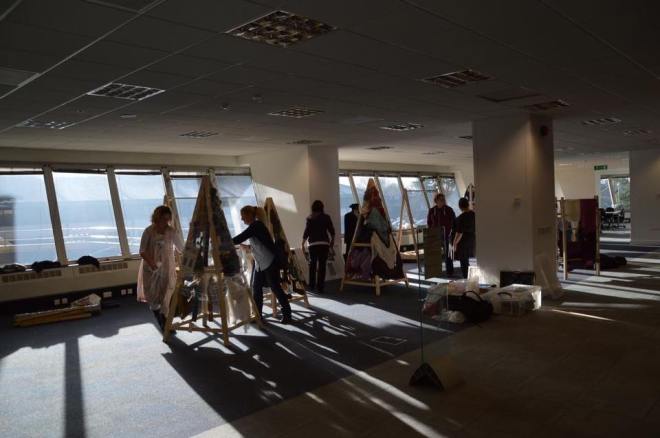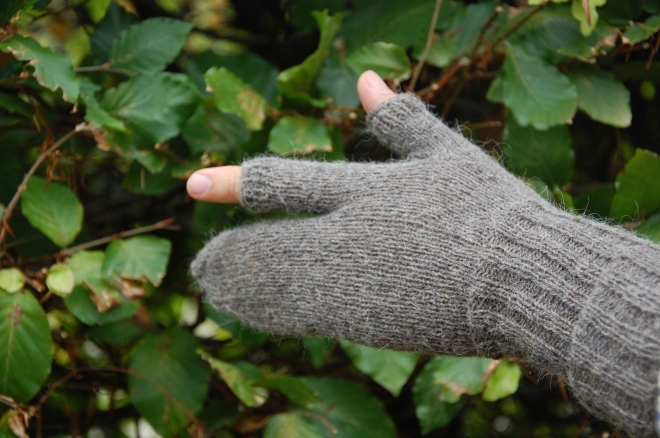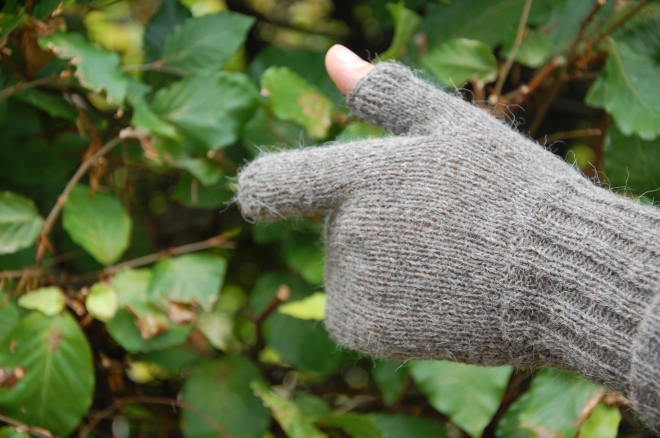Centenary Stitches Exhibition, London.
Monday 4th January 2016 was spent installing the Centenary Stitches exhibition at The National Archives in London.
Here are some pictures of the team setting it up:
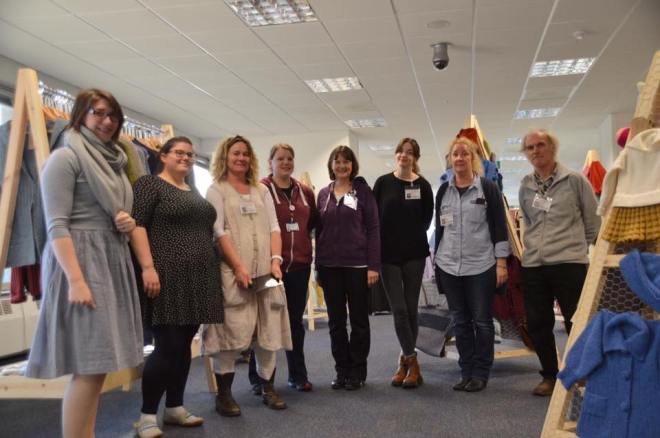
Here is a sneak preview of the exhibition – we even recreated part of the set we filmed in for ‘William’s Story, the follow-up drama-documentary!



The exhibition is open from now until March 19th.
The Battle of Loos Memorial
I am very glad to say that the costume and knitting created for ‘Tell Them of Us’ and the ‘Centenary Stitches’ exhibition continue to do their work in helping to commemorate the anniversaries of the First World War.
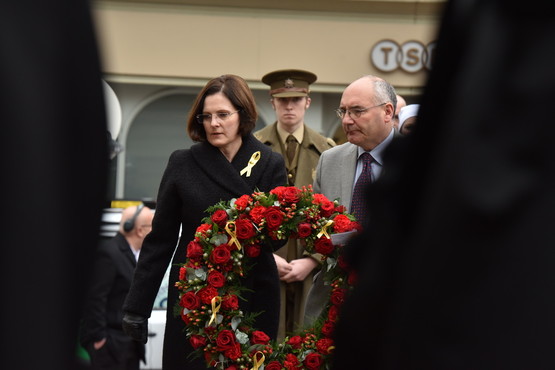
October 13th 2015 marked the centenary of a tragic day for Lincolnshire. More than 350 of the county’s men were killed in one hour. Almost all of the men who died on that day, have no known grave – many still lay where they fell.

We were asked to help with the memorial event by supplying costumed actors for some of the readings. Their presence helped to make the service all the more moving.

Crocheted ties, knitted socks (complete with their ‘Kitchener Stitch’), cardigan and waistcoat (hidden) completed their uniforms and kept our actors warm on that chilly October day. The VAD nurse’s uniform and the soldier’s hospital blues uniform were created by Pauline Loven. The officer’s uniform is a mixture of original and replica and is still covered in mud from filming in a WW1 trench last August.
Thank you to the Manor House Museum for their advice on the the appropriate badges for the 4th and 5th Battalions of the Lincolnshire Regiment and to the Museum of Lincolnshire Life for lending the officer’s cap badge.
For more photographs from the event, please visit The lincolnshire Echo.
Centenary Stitches Book Review
Here an extract from a review of Centenary Stitches by Karie Bookish:
Knitting in Wartime
‘I rarely come across knitting books like Centenary Stitches, but I think we need to celebrate efforts like this book. I am always very, very pleased to see ambitious knitting books that seek to treat knitting as both craft and social history – and Lovick’s book certainly delivers that. The book was clearly a labour of love for the people involved with it and I applaud the tenacity behind its existence. It is not your standard knitting book and it is all the better for it.’
For the full review follow this link: Centenary Stitches, Ed. Liz Lovick – Knitting in Wartime, review by Karie Bookish

If you don’t yet have a copy of this beautiful book, click here for Liz Lovick’s shop.
Omaha knitter hooked by British WWI yarn
The Omaha World-Herald has just published an interview with our wonderful graphic designer (and knitter) Judith Brodnicki. Like all of the Centenary Stitches team she was found through a single tweet…

Knitting for ‘Tell Them of Us’, WWI Film
‘Tell Them of Us’, WWI Film
Even before the script was written for ‘Tell them of Us’, I spent a year researching and gathering vintage resources to begin creating the costume. The film was to be set in the Lincolnshire village of Thimbleby during WW1. As I worked I became aware of just how much clothing was hand knitted during the period and realised that to only include sewn clothing would have been a distortion. Knitting clothing is more easily within the reach of lower income families than sewing clothing and we were telling the story of a small Lincolnshire village including many classes of people. Fabric had to be purchased by the yard, usually requiring three of four yards at a time. Wool can be bought by the ball, or spun from fleece, and the cost can be spread. Knitting doesn’t require expensive machinery either, just a few pairs of needles. It can also be done almost anywhere, and at any time. An experienced knitter doesn’t need much light either (most of the time).
During the war, knitting became a vital part of the home-front war effort, with millions of pairs of socks being knitted by women and children and sent to the front line via the Red Cross. Balaclavas, hats, mufflers, mitts, gloves, chest warmers, cholera belts (a knitted band to comfort the abdomen) and even bandages were knitted and sent to the front as well.
Knitted clothing also shows the changing fashions of the time, something I was keen to reflect, with a distinct move from shawls to cardigans, waistcoats and jumpers. Driven by the need to become active members of society, women had begun to abandon the wearing of corsets. This trend was accelerated by a scarcity of corsetry due to shortage of metal for their spiral wires and steel busks. However, corsets kept the body core insulated and warm, needing only a shawl to cover the shoulders to keep the chill off. Once corsets are no longer worn, cardigans, waistcoats and jumpers become vital for warmth. They are also liberating; shawls restrict the movement of the arms as they are needed to keep the shawl in place, sweaters now permit the playing of sports as well as active involvement in the workplace and factory.
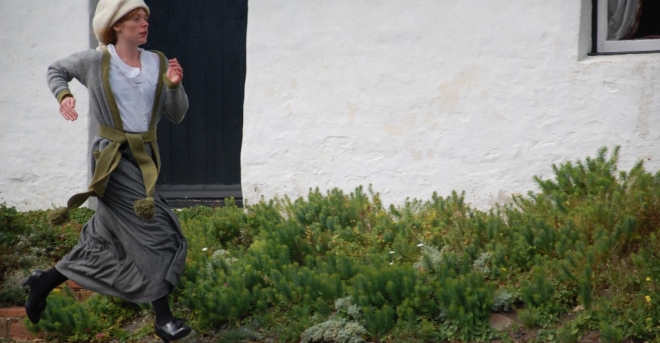
So many times people have said of the wonderful clothes created for ‘Tell Them of Us’, ‘I would wear that’. Women’s clothing in this period becomes recognisably modern. It is part of the story I wanted to tell, so a huge thank you to the amazing team of knitters, Centenary Stitches, who helped create such a believable and accurate wardrobe for the film. A book has now been produced based on a modernisation of the vintage knitting and crochet patterns which is now available from Northern Lace Press. The film ‘Tell Them of Us’ is now available on DVD from WAG Screen Shop.
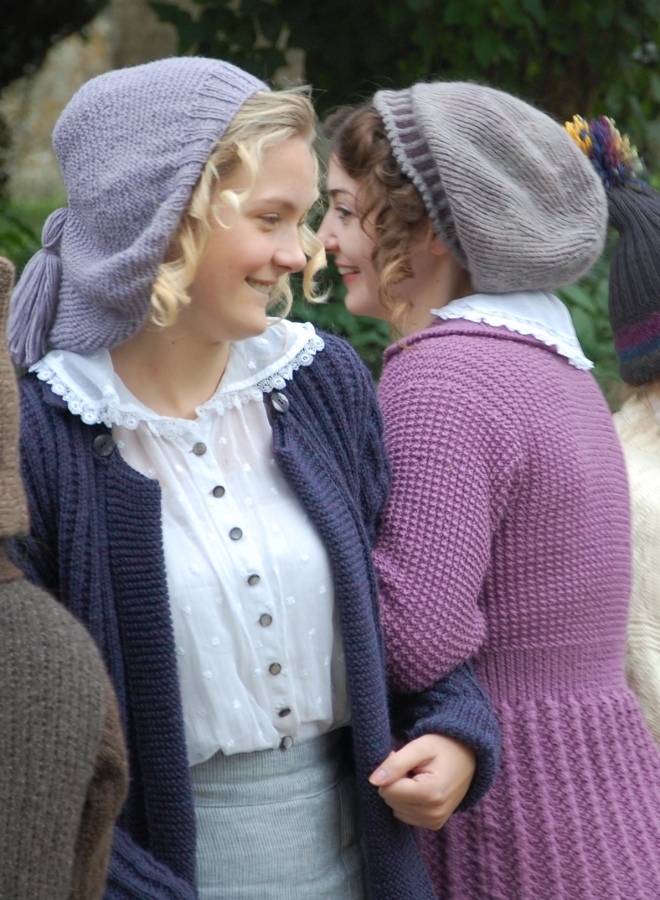
An Iconic WW1 Item
It might seem unlikely that a piece of domestic knitting could be an iconic item from the First World War, but I feel this is one.
Knitted for the comfort and protection its owner, this glove is also designed to help them kill.
It is a rifleman’s glove with thumb and forefinger kept free to operate the rifle and it is this combined nature, of comfort and killing, which makes the rifleman’s glove such a disturbing and iconic item.
The background to the creation of the glove is in the groundswell of homegrown support that developed during the First World War from women who supplemented the basic military uniform by knitting for the men on the front line.

Gloves, scarves, Balaclavas, sleeping helmets, wrist warmers and a great variety of other shapes and purposes were produced, parcelled and posted. These knitted items were either sent direct to soldiers by their by families or supplied through major organisations such as the Red Cross, Queen Mary’s Needlework Guild or the Regimental Comforts Fund.

These knitted items gradually became known as ‘comforts’. Perhaps it was as much the love with which they were knitted as the warmth they offered which comforted the men, even when they never knew who knitted them. It was like touching home. The knits also conveyed a somewhat homely look on the battalions. Indeed, Parliament was vaguely disturbed by what appeared to be a slightly subversive movement amongst the women and a criticism of the government’s ability to provide all that the soldiers needed. It is much more likely, however, that women were simply doing all that they could to help their men survive what were at times utterly appalling conditions.
This comment from the diary of a VAD Nurse gives some idea of how important these ‘comforts’ could be:
“What a godsend to us is the tiny, tightly packed room known as the Red Cross Stores! To convey what its comforts have meant to the maimed, bruised men they have clothed, to realise what it means to have such a supply to draw from, no human words are in any way adequate.
“We nurses know how much the gifts and comforts are appreciated, and we would emphatically assure all the women who have associated themselves with the distaff part of war work that every garment or article made, earned from some painracked man his grateful, heartfelt, though inarticulate, thanks. Every stitch they have made meant a few minutes’ greater comfort – and correspondingly less pain – from an aching body tortured on our behalf, for our defence and our birthrights. It is in no way a far-fetched statement to say that some garments – such as pneumonia jackets and cholera belts – have prolonged a man’s life.
“Many needlewomen have deplored and belittled their share in the war’s work; they have deprecated their efforts because these have not necessitated the donning of a uniform and the complete upheaval of their former life. If they would imagine what the comfort and warmth of their nice, smooth, home-knitted socks are to cold, chilblained feet, if they could see the men snuggling head and frost-nipped ears into their cosy Balaclavas, if they could witness – as we nurses have done – how a small jaconet-covered pillow, placed under the scapula of a man with his arm in an extension, has secured for the poor man a good night’s rest, there would be no more deprecating talk, no more half-sighing comments that ‘I don’t seem to be doing much. I’m only a Sister Susie.’ Be proud you are a ‘Sister Susie.’ You are doing some of the most valuable war service. The comfort supplying department is as necessary to the Army Medical Service as the Commissariat or the Clothing Department is to the army in the field. The fighting forces are infinitely glad of the existence of Sister Susies and their nimble fingers.” (Olive Dent)
The Rifleman’s gloves were knitted by Katy-Jayne Lintott.
The Centenary Stitches Exhibition November-December 2014
The exhibition ‘Centenary Stitches’ was held at the The Collection, Lincoln, for four weekends across November and December. The Centenary Stitches exhibition is now closed, but was a great success. If you are interested in hosting the exhibition please get in touch.
Above: Interviews with knitters; Liz Lovick. Judith Brodnicki, Jane Lawrence, MaryLou Egan and Juniper Askew.
A book of modernised WW1 patterns for the knits, used in the film, Centenary Stitches is available from Northern Lace Press
Here is one of the comments: Having heard about this film & the knitting it inspired from several different sources I went to Lincoln & saw it on Sunday. The whole thing was fantastic – so much attention to detail by so many people & so many angles to the whole project, that all came together so effectively… I hope this exhibition & film travel to as many places as possible. Congratulations & all strength to you all!
Centenary Stitches WW1 Knitting Book
Centenary Stitches WWI knitting book is now available to purchase. There are more pictures on the Northern Lace Press website You can also purchase the book there and on the Northern Lace blog.

How I found an army of knitters!
As WAG Screen’s costumier I spent a year researching and gathering vintage resources to begin creating the costume for the film which would be set on the home front in WW1. One thing worried me though – I was aware just how much clothing was knitted during the period and I cannot knit. Knitting also takes a long time to create, but to only include sewn clothing would have been a distortion. So, one Sunday morning, I speculatively tweeted for a volunteer knitter – confident that my words would disappear into the ether.

But I didn’t know then the character of knitters. Within an hour I had one hundred volunteers and quickly created a Facebook group to gather them in. In no time at all there were three hundred volunteers and a Ravelry group had been created too. Knitters, as I quickly discovered, are gregarious, generous and efficient, and a management system immediately evolved led by Liz Lovick, managed by Jane Lawrence and augmented by Judith Brodnicki. Out of the group we had over had over one hundred active knitters, designers, hookers and researchers and Centenary Stitches was born.

